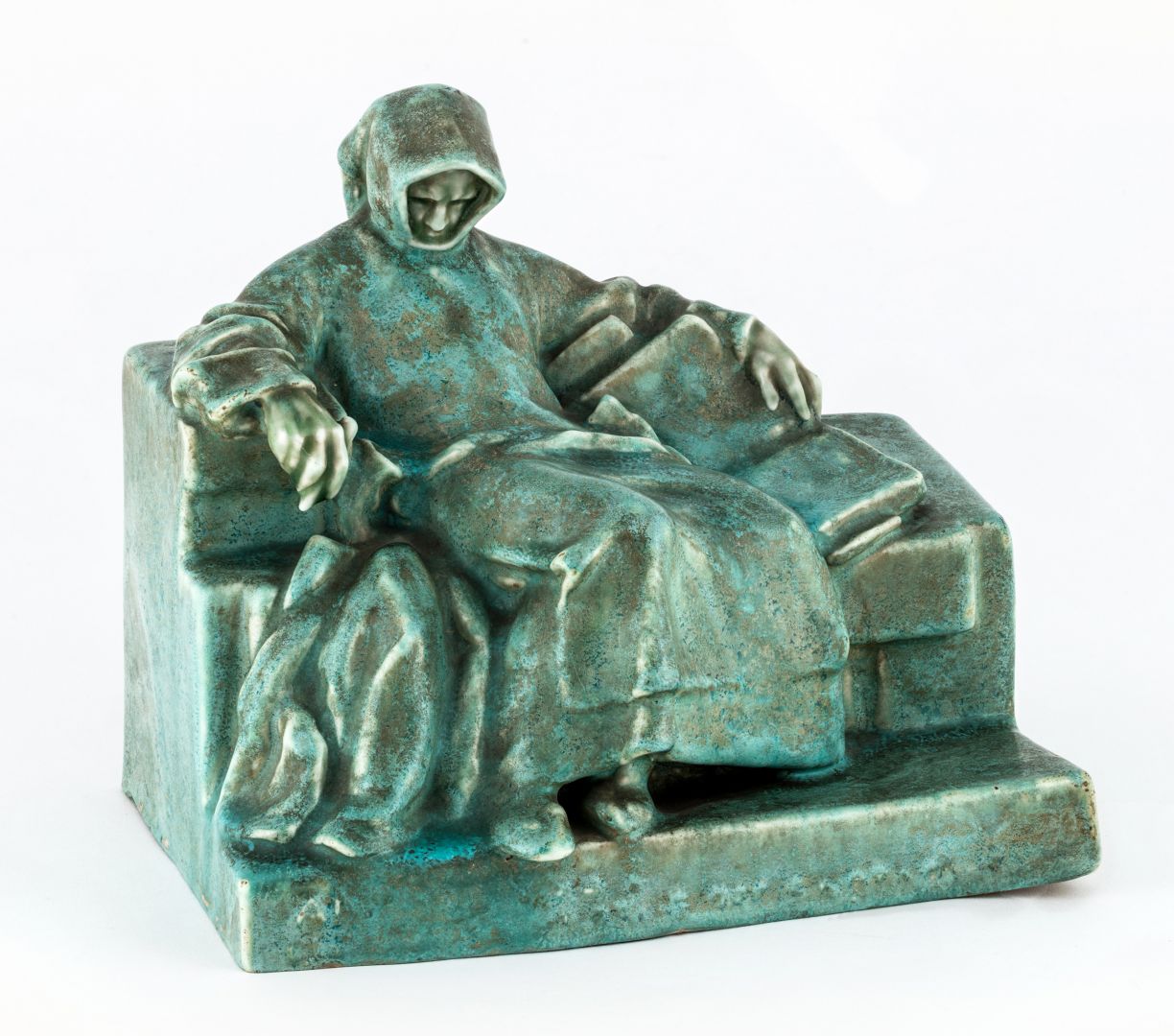Hall 3 - 5. view
Anonymus
LIGETI, MIKLÓS (1871–1944) Anonymus, 1903–1910
moulded, glazed porcelain; height: 20 cm; concave round seal on the interior, marking at the lower felt edge of the base: ANONYMUS
Fine Arts Collection, Inv. No.: 53.255.1.
The statue of Anonymous made by Miklós Ligeti is one of the most well-known public monuments of Budapest. This emblematic sculpture has been on display in the City Park since 1903. The bronze statue depicting the anonymous author of the Gesta Hungarorum was one of ten monuments, the costs of which were donated by Emperor Franz Joseph on the occasion of the Hungarian Millennium. The young artist was given quite the daunting task. ‘Since there was no description available on the physical appearance and the characteristics of the renowned chronicler, Ligeti was unable to depict him in an authentic manner’, writes Károly Lyka, and continues, ‘… therefore, he created a shrouded figure whose identity remains a mystery, as his face is completely shadowed and obscured by the hood he is wearing.’ Lyka also remarks that ‘although the challenge was not significant, his solution of the problem was complete.’
A significant contribution to the success of Ligeti was the fact that he worked with highly reduced and simplistic forms. He used a cube as the base form and gradually developed the figure from it. The diagonal orientation of the body was also a commendable execution, which is balanced out by its two arms that are spread out like scales. The sculpture is so popular that smaller desk figurine variants of it are sold and purchased to this day. In order to be manufactured by the Zsolnay Factory in Pécs, a new figure had to be made that was suitable to be cast in a ceramic mould. This was also provided by Ligeti. The artist not only shrunk the original figure, but also reworked it considerably, making it more suitable for the new material and adapting it to the sensibilities of the increasingly more popular Art Nouveau style.
The figurine presented here was manufactured in various sizes and glazed with eosin in several different colours. This specific copy was acquired by the Miskolc Mutual Credit Union in 1910 from one of the travelling exhibitions in Upper Hungary. It was donated to the collection of the museum in 1912.
Based on the description of Gertrud Goda
(In: A Herman Ottó Múzeum Képtára. Edited by: Andrea Pirint. Miskolc, 2004. 88. Cat. No.: 88.)
